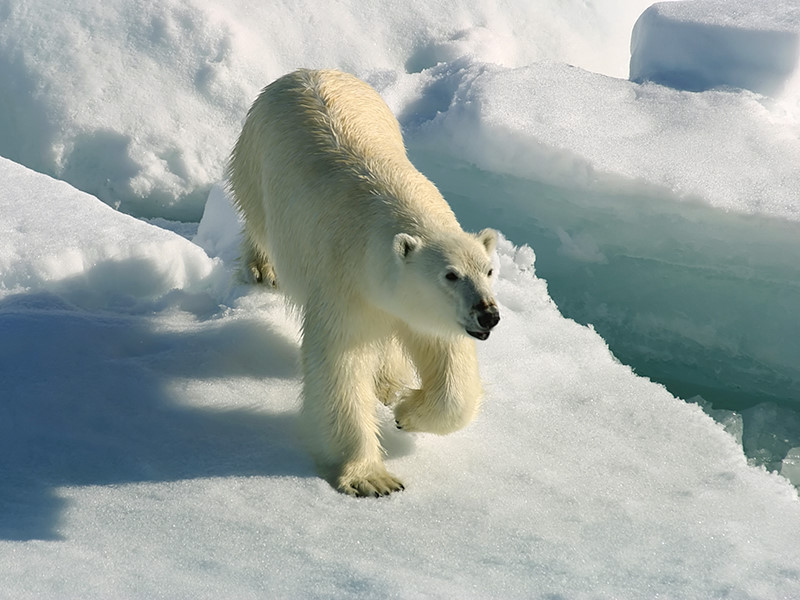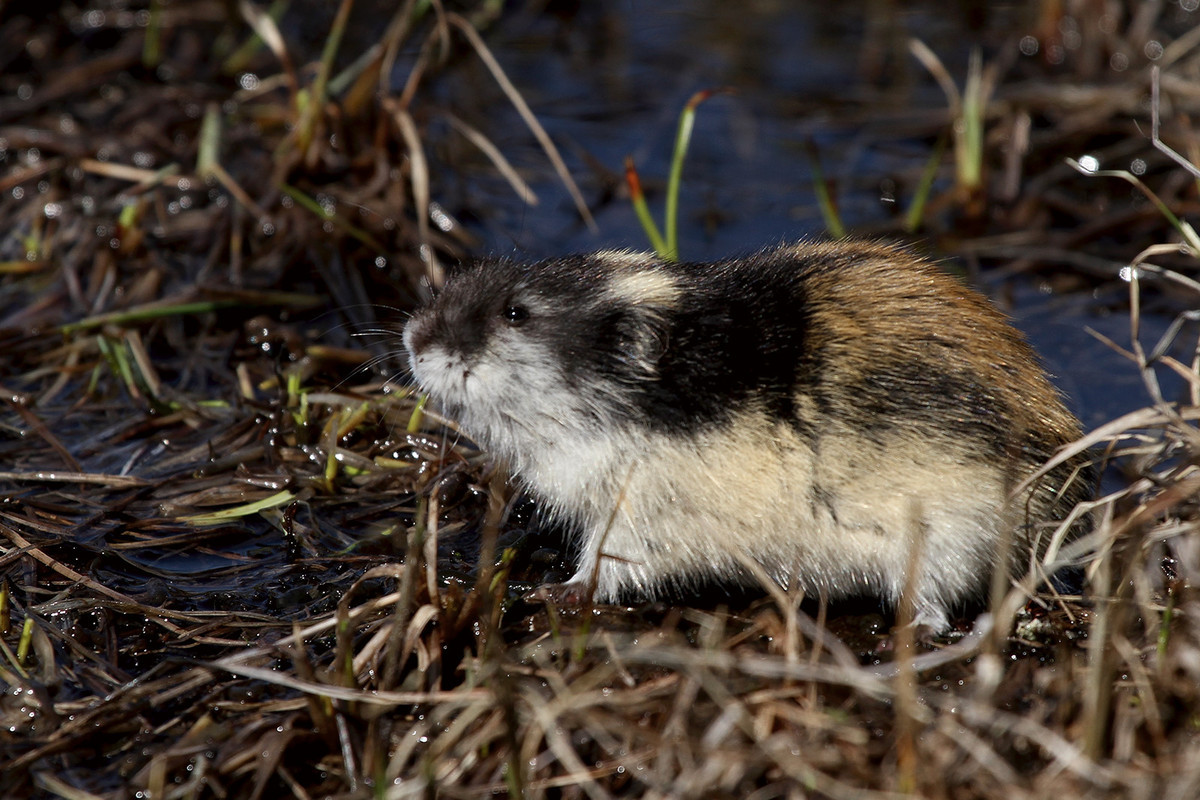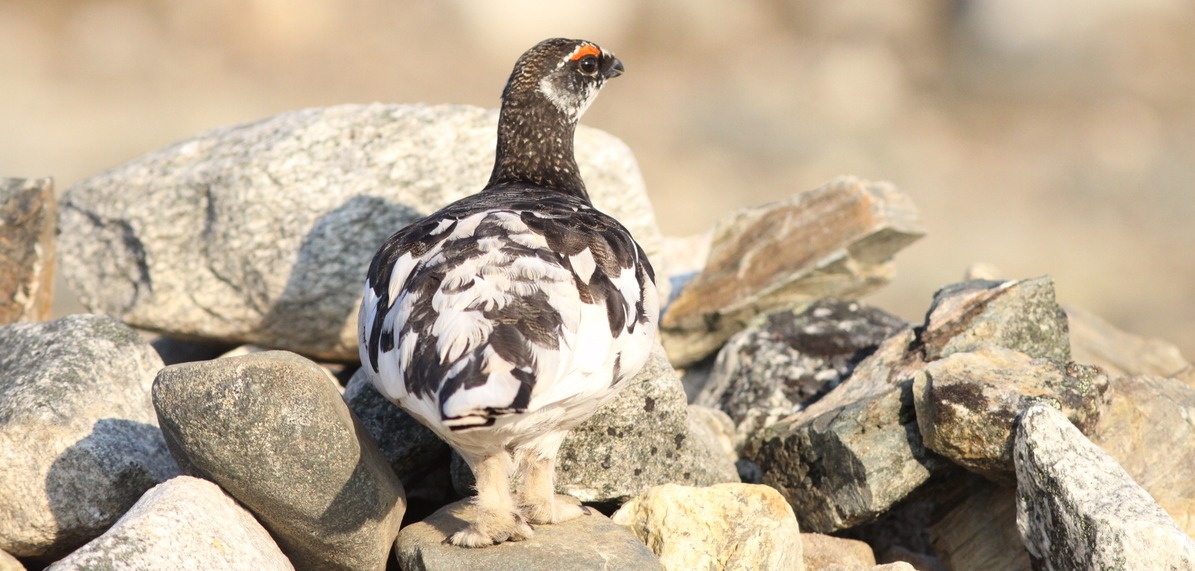Animals of the tundra
 The animals of the tundra have adapted to the cold, harsh climatic conditions of the frigid zone. They need to be able to survive in cold temperatures and strong winds.
The animals of the tundra have adapted to the cold, harsh climatic conditions of the frigid zone. They need to be able to survive in cold temperatures and strong winds.No cold-blooded vertebrates, such as reptiles or amphibians, can live on the tundra. However, during the summer months, there can be large insect populations.
The polar bear (pictured on the right) inhabits the shore regions of the Arctic Ocean. In Europe, it can be seen in the Spitsbergen region or in the northern coasts of Russia.
The polar bear is a predator. It eats fish, seals and birds.
The polar bear has adapted to life in the frigid zone with its thick, white fur and the dense layer of fat beneath its skin. It is also an excellent swimmer.
 Nowadays, the polar bear is facing extinction as a result of climate change. As the global temperatures grow warmer, the Arctic glacier shrinks, and the polar bear's habitat is slowly destroyed.
Nowadays, the polar bear is facing extinction as a result of climate change. As the global temperatures grow warmer, the Arctic glacier shrinks, and the polar bear's habitat is slowly destroyed.The Norway lemming (pictured on the right) is a rodent that inhabits the European tundra. Its thick fur protects it from the cold climate. It spends the harsh, long winter inside its nest.
The rock ptarmigan (pictured below) is a bird that can only be found in the European tundra. During the winter, it changes its feathers into a white winter plumage. By doing so, it can move in the snowy terrain hidden from predators.
